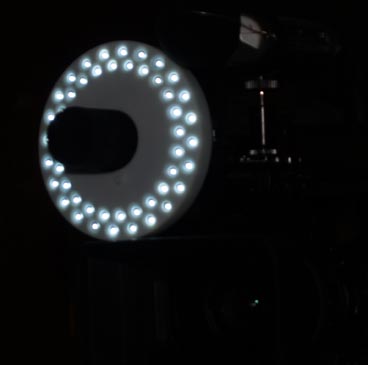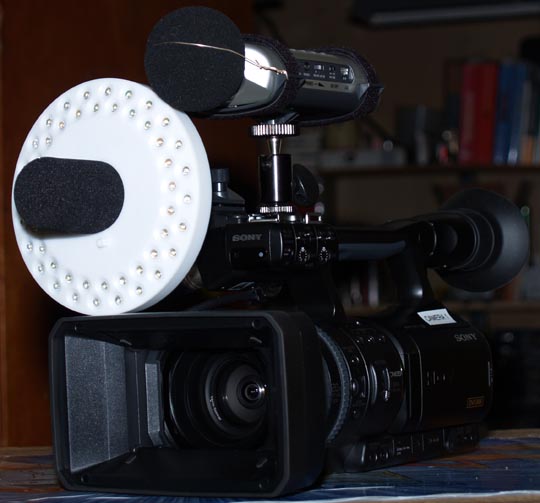July
July 12
HITTING THE JACKPOT
I have been hunting for a small group of CD albums from a certain Japanese pop singer for about ten years, ever since a friend in Canada made me some cassette copies of her albums. In the past 8 years, I digitized the recordings and attempted to clean them up a bit. They sounded fair, but things were missing and some things sounded a little strange due to the anomalies of tape.
Fast forward to 2007, when my eBay automatic search turns up an auction with the name of the artist. Lo and behold, the seller has not one, but nine CDs of hers for auction as a package deal. In my traditional style, I set the alarm for that day and hour and I do my last second snipe bid. I got the whole kit and caboodle for $47. Since the seller had mentioned that these were rental CDs from a Japanese rental outlet, I presume most folks just assumed that the CDs would show horrendous amounts of wear. The seller was modest about the condition of the CDs, and I was not expecting much. But when they arrived, I was delighted to find that they were almost in pristine condition, at least way better than typical rental CDs from the local library.
The artist is PSY-S (Mami Yasunori) and I found replacements for four of the tapes I've been listening to, and five new albums that I did not already own. The albums are: Holiday, Two Hearts, Atlas, Window, Pic-nic, Home Made, Non-Fiction, Signal and Two Bridges.
I listened briefly earlier this evening, but at very modest levels, and sampled a few albums/tracks. It was nice to hear an additional octave of bass, a cleaner overall sound and to be able to hear the cymbal work on Double-Double, from the Holiday CD, without that peculiar stereo phasing problem that cassettes pose. This particular album is the Bass Pig's delight, even though the bass notes rarely dip below the low 50s, because it is an album featuring a notable bass player, and as such, the mix is somewhat bass-dominant. And he does do some nice work on a few tracks. Also notable is that Arai Akino is singing chorus on this album. Not a bad mix of talent here.
I await anxiously the opportunity to crank these up. I've been busy ripping tracks to solid state media, for later playback at those traditional "pig" levels. Plenty of bone-jarring bass lives within these CDs and lots of good, catchy melodies for those up-lifting days when one is in a festive mood.
HD GOES SMALL
Since the wife and I are shooting wedding videos as a career of choice and enjoyment now, and at the same time we've been transitioning over to HD, we've been buying a lot of cameras with money converted from our vintage audio gear and our existing SD cameras. The conversion is nearly complete now, with two Sony HVR-V1Us and, for a B-roll camera that will always sit on a tripod, out of the way, a Canon HV20. That last one arrived Wednesday and we anxiously got to try it out. I knew full well the limitations of the HV20 and purchased it with one application in mind: telephoto shots of wedding ceremonies and as a "conductor cam" in symphony orchestra recordings. I think that it will serve well in these applications.
As far as the HV20 goes, the video samples floating around the net do indeed represent the very best you can get out of this camera. I found that in general, it produces a rather soft picture. The other thing I noticed is that the quality of consumer CMOS imagers is not up to the quality of the Sony professional images and it really shows in low-light situations, because I can see vertical streaks in the Canon footage, but no particular pattern in the Sony's noise in gain up situations. While the HV20 takes pretty good footage in good lighting, its lens is rather limited in what it can do. Also, there is no AE Shift function, so I have to rely on automatic settings, or risk manual aperture settings in stable lighting situations.
One little delight was that the HV20 scores fairly well on RightMark Audio Analyzer, with a reasonably flat response from 20-20KHz, measured from it's mic input to tape. The on-board mic is poor, but with an external mic of good quality, this camera can record some acceptable audio.
Overall, while the HV20 is cheap and delivers good quality for the price, there's still no substitute for the razor-fine detail and accurate color from the Sony professional cameras. The HV20 will serve well with close-up shots, and with its 1/2.7" chip, will enable me to use narrow enough depth-of-field where I can highlight a subject and keep the background out of focus. Perfect for the conductor shots in a symphony orchestra. A softer picture won't look bad in a closeup.
UFO SIGHTING?

Actually, this was a novel idea for a repurposing of a product targeted for the camping equipment market. In reality, it's a disc full of super-bright white LEDs. The product is made by Lichao in China, and sells for about $15. It runs on 3 AA batteries and provides enough illumination for decent close-up video, even on light-starved HD cameras.

This is what it actually looks like, mounted on my Sony V1U. It fits nicely around the shotgun mic and throws uniform light, enough to satisfy even a wide angle lens. My wife expressed a concern that it might blind people at a wedding reception, but I think it's no more obnoxious than those 50-watt on-camera lights that typical wedding videographers use.
One concern is color temperature. Although the LEDs have a pretty smooth spectral response, their color temperature is around 12,000║K. I'm going to make some minor modifications to these lights, one of them being painting the back of them flat black and the other one being applying a yellow ink to the LED lenses to balance the color temperature closer to daylight. A Marks-A-Lot yellow marker, or perhaps yellow ink from an inkjet refill kit may be just right for the job. This is a work in progress, but a quick on, because I have a wedding shoot this Saturday!
WEDDING VIDEO SHOOT AND AN AUDIO COMPARISON BETWEEN CAMERAS
I shot a wedding ceremony and reception two days ago and am in the process of ingesting the footage (130GB worth) into my editing workstation. Separate audio was recorded too, and another 1.7GB of audio wav files from the Zoom H4.
Overall, the wife and I were fairly well-prepared for this shoot, having learned from each prior shoot. Arrive early, have a lot of redundancy in equipment. We shot with three video cameras. I had two separate recording systems on the altar mics for picking up the wedding vows. I wasn't taking any chances.
Having tested the audio characteristics of each camera, I knew which ones were going to give appropriate performance for each situation. Since the Canon HV20 did so well on the tests, I fed the primary dialog mics into its input. I had a third mic on the same stand for secondary backup audio, feeding my Sony V1U. Thankfully, I did not have to use that audio. It was thin, very low and had tons of hiss.
The service included a choir, organ and piano performance. For this, I reserved the better gear, a Zoom H4 digital recorder and a pair of studio condenser mics. This, of course, made the perfect recording. If this was "10" on a scale of 10, then the HV20 was about 6.5 and the V1U about a 1. For a comparison, visit this page and listen to the audio samples.
Overall, the whole event went well. We had the usual issues with the still photographers from another shop who were all over the cathedral clicking away with their Canon D-SLRs, scampering around like ninja papparrazzis and frequently standing in front of our second camera, which was positioned at the end of the isle. Thankfully, with three cameras, we have a good angle from every moment in the affair. Maybe next time I'll set up a jib crane so I can get above the heads of everyone when these sorts of things occur.
We had fun, but it was also a lot of hard work, and I'm getting on in years and as such, it was a bit much activity, but it still beats radio engineering for variety and artistic expression. This was our first paid event that was shot in high definition. And it was a valuable experience. The footage that we got has the stuffins to make for a masterpiece. I have a vision of a cinematic approach to the wedding event, and the raw materials we acquired provide the sort of ingredients to make this objective a reality.
The editing pace is aggressive because we have another wedding shoot coming up in two more weeks. So I'm spending all available time working on this edit, getting the "grunt work" of synching tracks together, out of the way, so we can focus on creative editing. I've been studying the videos produced by real masters of the trade and getting a lot of great ideas from those. Creative ideas are the fuel that feeds the enthusiasm for the business, as it keeps each video as uncharted territory where new ideas are born.
MOTORCYCLES AND VIDEO CAMERAS
A friend of mine is making motorcycle riding technique videos and wants to upgrade to a camera with better imaging technology, so he stopped by today and we tried various cameras and made some interesting discoveries.
We already knew from experience that optical image stabilizers are undesirable on a bike, because of motor vibration causing the floating optics to resonate and vibrate. This causes the picture do to the "wiggles", whether OIS is on or off. He settled on a Canon ZR850, with EIS because of this, but the image quality was leaving much to be desired. So today we decided to try out my Canon HV20 on the specially-built mount for a camera on a bike.
We know that the HV20 has OIS, so this would be an exercise to see just how bad it gets affected with engine vibration. And it was the worst we've seen. The whole picture churned into a sort of dynamic MonÚt painting and then turned to something that looked like it was going through a blender. My friend was disappointed, as he really was hoping to buy an HV20 for this project, and for home use.
Next, we decided to try the VX2000, just for laughs. This is also OIS, and we mounted it on the bike and did the engine RPM runup. Not a hint of vibration in the picture though. Surprise! This OIS is not affected by vibrations! (No wonder it had such a steady picture when I did my 16Hz flying carpet demo).
Next, we got daring, and decided to try the HVR-V1U. Like the Canon HV20, it too suffered from optics resonance, but not as badly. But this test was interesting because I discovered another positive attribute of the VX2000. It's inherent resistance to vibration.
I made another observation about the three cameras as well, which seems to coincide with the test results: the cameras that fared poorly on the bike also made rattling noises when shaken by hand. We could hear the optical block banging around inside whatever it floats in. The VX2000 didn't make any such noise when shaken by hand.. The HV20 and the V1U both made a knocking sound. The coincidence is interesting. Perhaps it may be a hint at how the optical stabilization system is damped, and may indicate how well or poorly it will do when presented with strong vibrations.